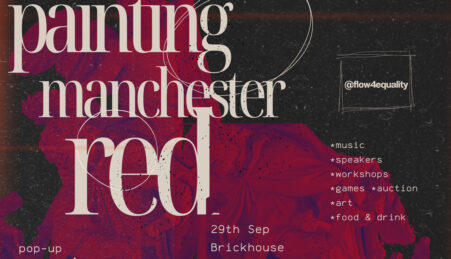
We continue our coverage of the Gothic Manchester Festival with an exploration of Steampunk…
By Lucy Simpson
Photographs c/o Ade Hunter/MMU
Calling all lovers of creativity, nostalgia, and brass-goggles! Steampunk is for you.
So, ‘What is this thing called Steampunk?’, “We will certainly be answering this question in full”, Helen Malarky, Manchester Metropolitan University’s Humanities-in-Public festival co-ordinator, explained at the event of the same name. The event at the Museum of Science and Industry showed how the Steampunking of anything was possible, from iPhones to religion, as part of Manchester Science Festival, continuing for the next week.
 Steampunk, in its most basic terms, is an art, fashion, and subculture about reworking the old and turning it new. However, beyond this is a re-inventive world overflowing with individuality, genius, and inclusion into a welcoming community. However, the fans, academics and experts at the event all had their own definitions, this is a culture everyone can make their mark upon.
Steampunk, in its most basic terms, is an art, fashion, and subculture about reworking the old and turning it new. However, beyond this is a re-inventive world overflowing with individuality, genius, and inclusion into a welcoming community. However, the fans, academics and experts at the event all had their own definitions, this is a culture everyone can make their mark upon.
Similarly, contribution was encouraged from all. The day kicked off in true Steampunk style with a tour around historian and head of collections, Jack Kirby’s, Power Hall in the museum itself. Featuring metal pistons and more than the occasional puff of steam, the venue was described later by both guests and speakers as “marvellous.” Kirby alighted his podium, as the costumed crowd gathered in top hats or Gothic dress, honouring the event’s inclusion as part of Gothic Manchester Festival. Kirby offered chronological coverage of Victorian steam engines, and hailing Thomas Watt as the “genius” behind it all.
The tour led us into the station building where several everyday items were eliciting a lot of interest. Peter Harrow, winner of the second ever Victorian Steampunk Society’s ‘Fellowship’, pierced the excited chatter with his Steampunk megaphone, after checking the setting was set to ‘amp,’ rather than ‘kill’ or ‘stun,’ of course. He vouched for the genre’s eccentric love of “leather, brass and gizmos,” revealing a Dalek complete with boiler, and an e-cigarette turned pipe. He encouraged the audience to Steampunk their own items, and “shape to your heart’s content.” On removing the brass tripod from his Steampunk iPhone, he assured us it was “still fully portable!” to which an eager audience member replied “On sepia setting no doubt!” Individuality is the key appeal of Steampunk to Harrow as he explained to me later “There’s no uniform for Steampunk but it’s still Steampunk”.
 From individuality, to rationality – in the form of self-defence. A talk and demonstration about the martial art Bartitsu, by Duncan McNulty and James Hogg from the Bartitsu Amateur Forum, revealed the varied nature of the Steampunk genre. Bartitsu adopts a fast combination of fighting styles, from bare knuckle to bayonet, a way of “cheating using science,” using any objects that came to hand, most commonly a cane. Hogg defined its Steampunk roots in “the activity of rediscovering and reinventing”, and McNulty as “the martial art that somehow feels right,” provoking a response from an audience-member of “I think hitting with canes sums it up!”
From individuality, to rationality – in the form of self-defence. A talk and demonstration about the martial art Bartitsu, by Duncan McNulty and James Hogg from the Bartitsu Amateur Forum, revealed the varied nature of the Steampunk genre. Bartitsu adopts a fast combination of fighting styles, from bare knuckle to bayonet, a way of “cheating using science,” using any objects that came to hand, most commonly a cane. Hogg defined its Steampunk roots in “the activity of rediscovering and reinventing”, and McNulty as “the martial art that somehow feels right,” provoking a response from an audience-member of “I think hitting with canes sums it up!”
After a break of coffee and cake, Clare Nally, senior lecturer at the University of Northumbria, spoke about Steampunk in graphic novels, referring to them and the event’s “beautiful venue” as “a natural home for Steampunk”. She emphasized “recovering lost histories” in her energetic academic study of Steampunk novels. Later, Nally explained how Steampunk allies itself with “nostalgia,” questioning “high and low culture” and “challenging ideas surrounding the Victorian era.”
More culture and a discussion of Steampunk films with Manchester Metropolitan University’s Anna Powell next, Research Fellow and previous Reader in Film and English Studies. Powell identifies Steampunk as an emergence from the Gothic, making the distinctions of the inclusion of science fiction and modern technology. She captures Steampunk’s imaginative spirit explaining it as something “on the cusp of science and magic.”
 A definition which lends itself to Claire McDermott and Matthew Carson’s, from ‘SUB’, a community who find spirituality within sub-cultures. Carson greets his “fellow Steampunkers,” applauding them on their “fabulous costumes,” as the pair define Steampunk as finding beauty in something discarded. They refer to Jesus as the first Steampunker, providing a metaphor that finds beauty in the steam: “The Lord is my engineer,” the Holy Spirit is the steam, and we are the machines. Later, McDermott describes Steampunk as “fantastic” due to its “accessibility from different angles:” a genre which “has something for everyone.”
A definition which lends itself to Claire McDermott and Matthew Carson’s, from ‘SUB’, a community who find spirituality within sub-cultures. Carson greets his “fellow Steampunkers,” applauding them on their “fabulous costumes,” as the pair define Steampunk as finding beauty in something discarded. They refer to Jesus as the first Steampunker, providing a metaphor that finds beauty in the steam: “The Lord is my engineer,” the Holy Spirit is the steam, and we are the machines. Later, McDermott describes Steampunk as “fantastic” due to its “accessibility from different angles:” a genre which “has something for everyone.”
As Steampunk has something for everyone, so too did this event. Guests were encouraged to find what Steampunk meant for them, with one guest finding it in reclaiming “a heritage that would otherwise be lost”, eventually Steampunking them all in the end. Another said the event had “encouraged more of an interest” in this community with an unquenched enthusiasm, and as Harrow identified, a “generosity of spirit” making this a brilliant afternoon for guests, speakers, and Steampunkers alike.
Lucy Simpson is a prospective journalist who is passionate about reading, writing and eating chocolate. You can read more of her work on her blog









Leave a reply